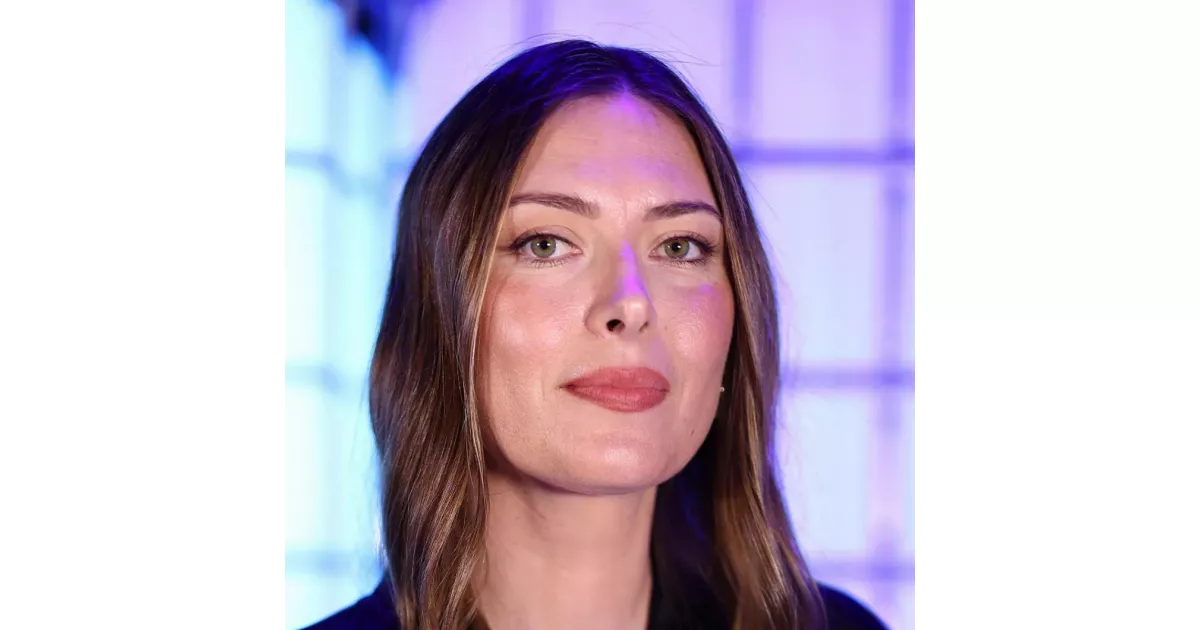Maria Sharapova is a retired Russian professional tennis player. She achieved the world No. 1 ranking by the WTA for 21 weeks and secured 36 WTA Tour-level singles titles. A defining aspect of her career is her accomplishment of winning five major titles and the 2004 WTA Tour Championships. Notably, she is one of only ten women to have completed a career Grand Slam in singles, marking her as a significant figure in tennis history.
1985: Last Time Player Won Back-to-Back Double Bagels
In the 2013 Australian Open, Sharapova became the first player to win in back-to-back double bagels since the 1985 Australian Open.
1986: Chernobyl Nuclear Accident
In 1986, Maria Sharapova's parents, Yuri Sharapov and Yelena, left their hometown of Gomel, Byelorussian SSR, due to concerns about the regional effects of the Chernobyl nuclear accident, shortly before Maria was born.
April 1987: Maria Sharapova Born
Maria Yuryevna Sharapova was born on 19 April 1987, in Nyagan, Russian SFSR, Soviet Union.
1990: Family Moved to Sochi
In 1990, when Sharapova was three years old, her family moved to Sochi, Russia.
1991: First Tennis Racquet
In 1991, when Maria Sharapova was four, she received her first tennis racquet from Aleksandr Kafelnikov, beginning her regular practice with her father at a local park.
1993: Attended Tennis Clinic Run by Martina Navratilova
In 1993, at the age of six, Maria Sharapova attended a tennis clinic in Moscow run by Martina Navratilova, who recommended professional training with Nick Bollettieri.
1994: Moved to the United States for Training
In 1994, Yuri Sharapov and his daughter Maria, who could not speak English, moved to the United States for professional tennis training at the IMG Academy.
1994: United States Resident
Sharapova has been a resident in the United States since 1994, while still preferring to keep her Russian citizenship.
1995: Signed by IMG
In 1995, Maria Sharapova was signed by IMG, which agreed to pay her annual tuition fee of $35,000 to stay at the academy.
1999: Representation by IMG Agent Max Eisenbud
Around 1999, Sharapova has been represented by IMG agent Max Eisenbud.
November 2000: Won Eddie Herr International Junior Tennis Championships
In November 2000, Maria Sharapova won the Eddie Herr International Junior Tennis Championships in the girls' 16 division at the age of 13, receiving the Rising Star Award.
2001: Turned Professional in 2001
According to Forbes, Maria Sharapova turned professional in 2001 and earned US$285 million (including prize money) since then.
2001: US Open Junior Tournament
Maria Sharapova had her second round participation in the 2001 US Open junior tournament.
2001: Professional Debut
Maria Sharapova made her professional debut on her 14th birthday, April 19, 2001.
2001: Last Time a Third Set Was Contested
The 2014 French Open was the first time since 2001 that a third set was contested in the final.
August 2002: Lowest Ranking Since August 2002
Following her first-round defeat at the 2020 Australian Open, Sharapova's ranking fell to no. 369, her lowest ranking since August 2002. This marked a significant downturn in her career.
October 2002: Reached No. 6 in ITF Junior World Singles Ranking
On 21 October 2002, Maria Sharapova reached No. 6 in the ITF junior world singles ranking, marking a significant achievement in her junior career.
2002: First WTA Tournament and Junior Grand Slam Finals
In 2002, Maria Sharapova played her first WTA tournament at the Pacific Life Open, and reached the finals of the girls' singles events at the Australian Open and Wimbledon.
2002: Lowest Year-End Ranking Since 2002
In 2015, Sharapova finished the year with a ranking of No. 131, marking her lowest year-end ranking since 2002. Her performance included early exits from tournaments and a loss at the US Open.
2003: First Opening Match Loss at a Grand Slam Since 2003
In 2003, Maria Sharapova had lost her opening match at a Grand Slam event, which caused her to win a Cellular South Cup, her 21st career WTA title, and first of the year.
2003: First Full Season as a Professional and WTA Newcomer of the Year
In 2003, Maria Sharapova played a full season, climbed into the top 50, captured her first WTA title at the Japan Open Tennis Championships, won the Bell Challenge, and was awarded the WTA Newcomer of the Year honor.
2003: Prince Triple Threat Hornet racquet use
In 2003, Maria Sharapova used the Prince Triple Threat Hornet racquet for part of the year, before experimenting with other Prince racquets.
2003: Earliest Wimbledon Loss Since 2003
In 2003, Sharapova experienced her earliest Wimbledon loss since 2003 by losing in the fourth round to eventual champion Venus Williams.
2003: Earliest Exit from Miami Open since 2003
In 2003, at the Miami Open, Maria Sharapova experienced her earliest exit from the tournament since her first appearance, losing in the second round to Daria Gavrilova.
December 2004: Participation in Exhibition for Hurricane Relief
In December 2004, Sharapova participated in an exhibition in Tampa, raising money for the Florida Hurricane Relief Fund.
2004: Entered Top 20 and Reached French Open Quarterfinals
During the spring clay-court season of 2004, Maria Sharapova entered the top 20 in the WTA world rankings and reached the quarterfinals of the French Open for the first time.
2004: First Time Out of Top 5 Since 2004
Following the US Open loss, Sharapova lost her opening match to Victoria Azarenka, and she fell out of the top 5 in the world rankings for the first time since 2004. Despite this, Sharapova topped her round-robin group at the tournament, after winning all three of her matches, defeating Svetlana Kuznetsova, Ana Ivanovic, and Daniela Hantuchová.
2004: Endorsement Deal with Motorola
Immediately after her win at the 2004 Wimbledon Championship, mobile phone company Motorola signed Sharapova to endorse their mobile phone line.
2004: Criticism of Sharapova's Father
In 2004, Anastasia Myskina criticized Sharapova's father for his behavior during the WTA Tour Championships. Myskina threatened to stop playing for Russia if Sharapova joined the Fed Cup team. Others echoed the criticism, though the Russian captain downplayed the issue.
2004: Wimbledon Championship win with Prince More Attack 920
In 2004, Maria Sharapova began the season using the Prince More Attack 920 racquet, which she then used to win the prestigious Wimbledon Championships. She later gifted this racquet to Regis Philbin during a taping of Live with Regis and Kelly.
2004: 2004 WTA Tour Championships
In 2004, Maria Sharapova won the WTA Tour Championships, showcasing her prowess on the court.
2004: Michael Joyce as Coach
In 2004, Michael Joyce became one of Sharapova's coaches, serving in this role from 2004 to 2011.
2004: 2004 Wimbledon Championships Victory
In 2004, at the age of 17, Maria Sharapova won the Wimbledon Championships, defeating Serena Williams, who was the two-time defending champion at the time.
2004: Earliest Exit at Grand Slam Since 2004 US Open
In 2004, during her US Open title defense, Sharapova faced an upset in her third-round match by Agnieszka Radwańska, marking her earliest exit at a Grand Slam singles tournament since the 2004 US Open.
April 2005: People's Most Beautiful Celebrities
In April 2005, People magazine named Sharapova one of the 50 most beautiful celebrities in the world.
August 2005: First World No. 1 Ranking
In August 2005, at the age of 18, Maria Sharapova became the world No. 1, marking her as the first Russian woman to achieve the top singles ranking.
August 2005: First Asian and Russian Woman to Hold World No. 1 Ranking
On 22 August 2005, Maria Sharapova became the first Asian and Russian woman to hold the world No. 1 ranking. However, she held the ranking for only one week.
September 2005: Regained World No. 1 Ranking
On 12 September 2005, Maria Sharapova leapfrogged Lindsay Davenport to take the world No. 1 ranking again after the US Open.
2005: Eagerness to Make Fed Cup Debut
At the end of 2005, Sharapova expressed her keenness to make her Fed Cup debut.
2005: Forbes Celebrity 100
From 2005 to 2011, Sharapova was named to the Forbes Celebrity 100, which attempts to compile the top 100 most powerful celebrities of that year.
2005: Maria Sharapova ranked number 1
From 2005 to 2012, Maria Sharapova was ranked number 1 for 21 weeks.
2005: Donation to Beslan School Hostage Crisis Victims
In 2005, Sharapova donated around US$50,000 to those affected by the Beslan school hostage crisis.
2005: On-Court Grunting
In 2005, Sharapova's on-court grunting reached a recorded 101 decibels during a match at Wimbledon. She described it as a natural instinct.
January 2006: Switched to the Prince O3 White racquet
In January 2006, Sharapova switched to the Prince O3 White racquet.
March 2006: Highest-Paid Female Athlete
In March 2006, Forbes magazine listed Sharapova as the highest-paid female athlete in the world, with annual earnings of over US$18 million.
April 2006: Withdrawal from Fed Cup Tie Against Belgium
In April 2006, Sharapova withdrew from the Fed Cup tie against Belgium, despite stating at the end of 2005 that she was keen to make her Fed Cup debut.
2006: Start of Mildronate Usage
In 2006, Sharapova began taking the medicine mildronate, also known as meldonium, prescribed by her family doctor for several health issues. This medication was taken for ten years before it was placed on WADA's banned list in 2016.
2006: 2006 Season Summary
In 2006, Sharapova lost in the semifinals of the Australian Open to Henin, claimed her first title in nine months at the Tier I tournament in Indian Wells, defeating Hingis in the semifinals and Elena Dementieva in the final, and reached the final in Miami before losing to Kuznetsova.
2006: Sharapova at the US Open
In 2006, Sharapova made it to the quarterfinals of the US Open for the first time since she won the tournament.
2006: Nike Pretty Campaign
In the summer of 2006, Sharapova starred in an award-winning campaign for the sports clothing brand Nike, called "Pretty".
2006: Little Black Dress
Sharapova had earlier collaborated with Nike on the little black dress that she wore for her night matches at the 2006 US Open. The dress featured a round crystal-studded collar and was inspired by Audrey Hepburn.
January 2007: Sponsorship Deals with Gatorade and Tropicana
In January 2007, Sharapova signed sponsorship deals with Gatorade and Tropicana, which ended in 2009.
February 2007: Appointed UNDP Goodwill Ambassador
On February 14, 2007, Sharapova was appointed a Goodwill Ambassador for the United Nations Development Programme (UNDP) and donated US$210,000 to UNDP Chernobyl-recovery projects.
February 2007: United Nations Development Programme Goodwill Ambassador
Since February 2007, Maria Sharapova has served as a United Nations Development Programme Goodwill Ambassador, focusing on the Chernobyl Recovery and Development Programme.
April 2007: Withdrawal from Fed Cup Tie Against Spain
In April 2007, Sharapova withdrew from the Fed Cup tie against Spain due to injuries.
July 2007: Withdrawal from Fed Cup Tie Against United States
In July 2007, Sharapova withdrew from the Fed Cup tie against the United States because of injuries, leading to the Russian captain suggesting she would be ineligible for the Fed Cup final in September.
2007: Defeat at the US Open
At the US Open in 2007, Maria Sharapova lost to American teenager Melanie Oudin in the third round, resulting in a drop in her ranking to No. 32.
2007: Acknowledged Discomfort on Clay Courts
In 2007, Sharapova admitted that she was not as comfortable with her movement on clay courts compared to other surfaces and described herself as like a "cow on ice" on clay.
2007: Brief use of Prince O3 Speedport White at Kremlin Cup
In 2007, Sharapova briefly used the Prince O3 Speedport White racquet at the Kremlin Cup, but then switched back to the O3 White racquet.
2007: Sharapova Qualifies for the WTA Tour Championships
In 2007, Sharapova qualified for the WTA Tour Championships for the first time since 2011.
2007: Continued Top Ranking Despite Injury
Sharapova topped Forbes' list of highest-paid female athletes every year until 2016, even after her 2007 shoulder injury.
2007: Shoulder Problems Impact Serve
Since the beginning of 2007, Sharapova's shoulder problems reduced the effectiveness of her serve, leading to inconsistent first serves and more double faults.
July 2008: Message to Emily Bailes Memorial Service
In July 2008, Sharapova sent a message on DVD to the memorial service of Emily Bailes, who had performed the coin toss ahead of the 2004 Wimbledon final that Sharapova won.
July 2008: Switched to the Prince O3 Speedport Black
In July 2008, after returning to the tour following shoulder surgery, Maria Sharapova switched to the Prince O3 Speedport Black racquet.
August 2008: Sharapova's ranking
In August 2008, Sharapova was at her highest ranking since comeback from her shoulder injury.
2008: Loss to Dinara Safina at the 2008 French Open
In 2008, Maria Sharapova experienced a loss to Dinara Safina in the fourth round of the French Open, marking the last time she lost a match on clay after winning the first set until a later match.
2008: Attendance at Fed Cup Final
In 2008, Sharapova attended the Fed Cup final, cheering from the sidelines. However, she acted as a "hitting partner" in practices, leading to speculation she was only attending to enable her to play at the 2008 Beijing Olympics.
2008: Sharapova Finishes Top-10
In 2008, Sharapova had her first top-10 finish since 2011 and first top-5 finish since 2007.
2008: Injury Layoff and Abbreviated Serve
In her return from an injury layoff in 2008 to 2009, Sharapova used an abbreviated serve motion, which resulted in less power and a high number of double faults.
2008: 2008 Australian Open Title
Maria Sharapova won the 2008 Australian Open, demonstrating her continued success in major championships.
February 2009: Sharapova Drops Out of Top 10
In February 2009, Maria Sharapova dropped out of the top 10, before returning in 2011.
2009: Loss at the US Open
At the US Open in 2009, Maria Sharapova was the 14th seed and made it to the fourth round, where she lost to top seed Caroline Wozniacki.
2009: Abbreviated Motion Continued
In 2008 and 2009, Sharapova continued to use an abbreviated motion, which, whilst producing aces, was somewhat less powerful, and also gave a very high number of double faults.
2009: Relationship with Sasha Vujačić Begins
In 2009, Sharapova began a relationship with Slovenian professional basketball player Sasha Vujačić.
2009: First Red Clay Title
In 2009, Sharapova won her first red clay title at the Internationaux de Strasbourg.
2009: End of Gatorade and Tropicana Sponsorships
In 2009, Sharapova's sponsorship deals with Gatorade and Tropicana ended.
January 2010: Nike Contract Renewal
In January 2010, it was announced that Sharapova had renewed her contract with Nike, signing an 8-year deal for $70 million, the most lucrative deal ever for a sportswoman.
July 2010: Chernobyl Trip
In late June/early July 2010, Sharapova fulfilled her planned trip to Chernobyl-affected areas.
2010: Return to More Elongated Motion
From 2010, Sharapova returned to a more elongated motion, similar to her pre-surgery serve. She was able to produce speeds greater than before, including a 121 mph serve at the Birmingham tournament.
2010: Worst Grand Slam Result Since 2010 Australian Open
In 2010, Maria Sharapova had her worst Grand Slam result since the 2010 Australian Open, marking her first-ever opening round loss at Wimbledon after losing to Vitalia Diatchenko in three sets.
2010: Launch of Nike Maria Sharapova Collection
In 2010, Sharapova launched her own tennis apparel line, the Nike Maria Sharapova Collection, including dresses designed for major tournaments in collaboration with Nike and Cole Haan.
2010: Switched to the Prince EXO3 Black 100
In 2010, Sharapova switched to the Prince EXO3 Black 100 racquet.
2010: Thomas Högstedt as Coach
In 2010, Thomas Högstedt became one of Sharapova's coaches, serving in this role from 2010-2013, and then again in 2018-2019.
2010: Forehand Swing Alteration
In 2010, after returning from shoulder surgery, Sharapova altered her forehand swing to a more conventional one with increased topspin. This change improved her performance on clay courts but impacted her game on faster surfaces. It also allowed her to produce speeds greater than before, including a 121 mph serve at the Birmingham tournament.
June 2011: Named One of the "30 Legends of Women's Tennis: Past, Present and Future" by Time
In June 2011, Maria Sharapova was named one of the "30 Legends of Women's Tennis: Past, Present and Future" by Time.
2011: Caroline Wozniacki Indian Wells Title
Caroline Wozniacki was the 2011 Indian Wells Champion.
2011: Sharapova Wins Italian Open and Reaches French Open Semifinals in 2011
During the clay-court season in 2011, Sharapova won the Italian Open, marking her biggest clay-court victory. At the French Open, she reached the semifinals, losing to Li Na.
2011: Forbes Top-Paid Athletes List
In 2011, Forbes listed Sharapova as No. 29 in their list of 50 top-paid athletes, the only woman on the list.
2011: Sharapova Hires Thomas Högstedt as Coach
In 2011, Maria Sharapova announced that she would bring in Thomas Högstedt as a coach, joining Michael Joyce. She later split with Joyce after a successful cooperation.
2011: Engagement to Sasha Vujačić
In 2011, Sharapova became engaged to Slovenian professional basketball player Sasha Vujačić.
2011: Sharapova's Performance and Health Issues in Early 2011
In 2011, Sharapova participated in the Australian Open as the 14th seed but lost in the fourth round. She withdrew from the Dubai Championships and the Qatar Open due to an ear infection. She returned to the tour in March at the BNP Paribas Open, reaching the semifinal. At Key Biscayne, she reached the final, returning to the top 10 for the first time since February 2009.
2011: Sharapova's Performance at US Open and WTA Tour Championships in 2011
In 2011, Sharapova participated in the US Open, but was upset in the third round. She qualified for the WTA Tour Championships for the first time since 2007 but withdrew during the round-robin stage due to an ankle injury. She ended the year as No. 4 in the world.
2011: Endorsement of Head racquets begins
In 2011, after a decade with Prince, Sharapova began endorsing Head racquets and using their Instinct line.
2011: Loss in 2011 Fed Cup
In the 2011 Fed Cup first-round tie, Sharapova lost her match against Virginie Razzano of France. She was scheduled to play Alizé Cornet but was suffering from a viral illness.
2011: Forbes Celebrity 100 Listing Ends
Sharapova's listing on the Forbes Celebrity 100 ended in 2011, after being named to the list from 2005-2011.
March 2012: Named One of the "100 Greatest of All Time" by Tennis Channel
In March 2012, Maria Sharapova was named one of the "100 Greatest of All Time" by Tennis Channel.
August 2012: End of Engagement to Sasha Vujačić
In August 2012, Sharapova confirmed that she and Sasha Vujačić had ended their engagement and separated earlier that year.
2012: Continued Success in Stuttgart in 2012
In 2012, Maria Sharapova continued her successful run at the Stuttgart tournament, marking the beginning of her three-year win streak at the event.
2012: Sugarpova confectionery brand launch
In 2012, Maria Sharapova launched her confectionery brand, Sugarpova.
2012: French Open win with Head Instinct line
In 2012, Maria Sharapova won the French Open using Head's Instinct line of racquets.
2012: 2012 French Open Title and Olympic Silver Medal
In 2012, Maria Sharapova won the French Open, completing her career Grand Slam, and also won an Olympic silver medal in women's singles at the London Olympics.
2012: Sharapova Wins Silver Medal at 2012 Summer Olympics
In 2012, Sharapova made her Olympic debut at the London Summer Olympics. She defeated Maria Kirilenko to reach the Olympic final, where she was defeated by Serena Williams, winning a silver medal and becoming world No. 2.
2012: Sharapova's Performance at Indian Wells and Sony Ericsson Open
In 2012, Sharapova reached the final at the Indian Wells Open, losing to Victoria Azarenka. She also reached the final at the Sony Ericsson Open, losing to Agnieszka Radwańska. She won her first title of the year in Stuttgart, defeating Victoria Azarenka. She was then beaten by Serena Williams in the Madrid Open.
2012: Sharapova Reaches Australian Open Final
In 2012, Sharapova reached the final of the Australian Open, losing to Victoria Azarenka. Her ranking improved to world No. 3. She then played in the Open GDF Suez in Paris, where she lost in the quarterfinals.
2012: Forbes Top-Paid Athletes Ranking
In 2012, Sharapova was listed as No. 15 on Forbes' list of top-paid athletes, and was joined in the top 20 by Li Na at No. 16 and Serena Williams at No. 17.
2012: Sharapova Wins French Open and Completes Career Grand Slam in 2012
In 2012, Sharapova won the French Open, her fourth career Grand Slam title, allowing her to regain the world No. 1 ranking. She became only the tenth woman to complete a Career Grand Slam with the French Open victory. During the tournament, Sharapova was asked to bear the flag at the opening ceremony for the 2012 Summer Olympics.
August 2013: Sharapova's Shoulder Injury in August 2013
Maria Sharapova had not played since August 2013 due to a recurring shoulder injury.
2013: Jimmy Connors and Sven Groeneveld as Coaches
In 2013, Jimmy Connors and Sven Groeneveld became coaches of Sharapova. Sven Groeneveld coached Sharapova from 2013 to 2018.
2013: Continued Success in Stuttgart in 2013
In 2013, Maria Sharapova achieved another victory at the Stuttgart tournament, contributing to her three-year win streak at the event.
2013: First Opening Round Loss since 2013
In 2013, Maria Sharapova recorded her first opening round loss since 2013 at the Kremlin Cup, losing in straight sets to Magdaléna Rybáriková.
2013: Brand ambassador deal with Porsche
In 2013, Maria Sharapova signed a three-year deal to become a brand ambassador for Porsche.
2013: Sharapova's Performance at the 2013 Australian Open
In 2013, Sharapova started her season at the Australian Open seeded second, where she reached the semifinals but lost to Li Na.
2014: Continued Success in Stuttgart in 2014
In 2014, Maria Sharapova completed her three-year winning streak at the Stuttgart tournament, marking another significant achievement in her career.
2014: First US Open Win since 2014
In 2014, Maria Sharapova had her first US Open win since 2014 after winning against world No. 2, Simona Halep.
2014: Investment in Supergoop
In 2014, Maria Sharapova invested in the sunscreen brand Supergoop.
2014: Second French Open Title
In 2014, Maria Sharapova secured her second French Open title, marking her fifth major championship overall.
2014: French Open win with Head Instinct line
In 2014, Maria Sharapova won the French Open again using Head's Instinct line of racquets.
2014: Torch Bearer for Sochi Winter Olympics
In 2014, Sharapova helped to promote the Winter Olympics in Sochi, Russia, and was the first torch bearer in the torch-lighting ceremony during the opening festivities.
2014: Highest Winning Percentage on Clay
In 2014, Sharapova led the WTA Tour with the highest winning percentage on clay among active players, with an 84.25% winning rate.
2015: Sharapova's 2015 Season Kickoff
In 2015, Maria Sharapova started her season at the Brisbane International as the top seed, eventually winning the title against Ana Ivanovic. This victory marked her tenth win over Ivanovic and secured her 34th title, extending her streak of winning at least one title every year for 13 consecutive years.
2015: First WTA Title since 2015
In 2015, Maria Sharapova won the Tianjin Open, marking her first WTA title since 2015, after making a comeback from 1-4 in the first set and 1-5 in the second set against Aryna Sabalenka in the final.
2015: Participation in 2015 Fed Cup
In 2015, Sharapova helped Russia earn a place in the Fed Cup semifinals after beating Urszula Radwańska and Agnieszka Radwańska. She withdrew from the semifinal and played in the final, winning both matches, but Russia lost the final 3–2.
2015: First grasscourt win since 2015 at the Mallorca Open
In 2015, Sharapova secured her first grasscourt win since 2015 at the Mallorca Open, defeating Viktória Kužmová. However, her run ended in the second round against Angelique Kerber. She ended the year ranked No. 131, her lowest year-end ranking since 2002.
2015: Dating Grigor Dimitrov Ended
In 2015, Sharapova's relationship with Bulgarian tennis player Grigor Dimitrov ended.
January 2016: Failed Drug Test at the 2016 Australian Open
In January 2016, Maria Sharapova failed a drug test at the Australian Open after testing positive for meldonium, a substance newly banned by WADA. This led to her provisional suspension from competitive tennis.
January 2016: Meldonium Added to Banned Substances List
In January 2016, meldonium, a drug Sharapova had been taking, was added to the World Anti-Doping Agency (WADA)'s list of banned substances. Sharapova later tested positive for the drug at the 2016 Australian Open.
March 2016: Denial of Missed Warnings
In March 2016, Sharapova denied reports that she had missed five warnings about meldonium being added to the banned substances list. She communicated this denial via Facebook.
March 2016: Failed Drug Test Announcement
On 7 March 2016, Sharapova revealed that she had failed a drug test at the 2016 Australian Open due to testing positive for meldonium. She was provisionally suspended by the International Tennis Federation (ITF) effective from 12 March 2016.
June 2016: Two-Year Suspension
On June 8, 2016, Maria Sharapova was suspended from playing tennis for two years by the International Tennis Federation (ITF) due to the failed drug test.
September 2016: CAS Ruling on Sharapova's Suspension
Following hearings on 7 and 8 September 2016, the Court of Arbitration for Sport (CAS) panel found that Sharapova had a reduced perception of risk while using Mildronate. This was based on her long-term use without anti-doping issues, openness about its use, consultation with the prescribing doctor, and lack of specific warnings. However, CAS also noted her failure to disclose meldonium use on doping control forms and her agent's failure to properly check the Prohibited List.
October 2016: Reduction of Sharapova's Ban in October 2016
In October 2016, Maria Sharapova's ban was reduced from 24 months to 15 months, starting from January 26, 2016, which was the date of her failed drug test.
October 2016: Suspension Reduced to 15 Months
On October 4, 2016, Maria Sharapova's suspension was reduced to 15 months, retroactive to the date of the failed test, by the Court of Arbitration for Sport.
2016: Seeding for the first time since 2016 Australian Open
Following strong performances in the clay court season in 2018, including the Italian Open, Maria Sharapova improved her ranking and was seeded for the first time since the 2016 Australian Open.
2016: Return to Hard Court at Stanford Classic since 2016 Australian Open
In 2016, Maria Sharapova participated in her first hard court tournament at the Stanford Classic since the Australian Open. After winning her first round, she withdrew from the next round with a left arm injury.
2016: Withdrawal from Brisbane International in 2016
In 2016, Maria Sharapova was the defending champion at the Brisbane International. However, she withdrew hours before her first-round match due to a left forearm injury.
2016: Explanation of Failed Drug Test
In 2016, Sharapova explained that she had been taking a medicine called mildronate, also known as meldonium, for ten years for health issues, prescribed in 2006. She claimed she was unaware that meldonium had been added to WADA's banned list on January 1, 2016.
2016: End of Forbes Top Ranking
In 2016, Sharapova's run as the highest-paid female athlete, as ranked by Forbes, came to an end.
2016: Reactions to Sharapova's Announcement
In 2016, fellow tennis players reacted to Sharapova's announcement of failing a drug test with mixed reactions. Some, like John McEnroe and Pat Cash, were skeptical, while others, like Serena Williams, commended her for being upfront. Roger Federer, Rafael Nadal, and Andy Murray publicly condemned her, arguing for punishment. Novak Djokovic expressed sympathy but acknowledged the need for punishment. The Russian Tennis Federation defended Sharapova.
April 2017: Sharapova's Return to Tennis in April 2017
In April 2017, Maria Sharapova made her comeback to the WTA Tour, receiving wildcards to compete in the Stuttgart Open, Madrid Open, and Italian Open. She won her first match against Roberta Vinci at the Porsche Grand Prix after her suspension.
April 2017: Return to WTA Tour at Stuttgart Open
In April 2017, Maria Sharapova returned to the WTA Tour at the Stuttgart Open after serving her suspension.
September 2017: Publication of Autobiography
On September 12, 2017, Sharapova's autobiography, "Unstoppable: My Life So Far", was published by Sarah Crichton Books.
2017: Participation in Madrid and Italian Opens and French Open Wildcard Denial in 2017
In 2017, Maria Sharapova participated in the Madrid Open and the Italian Open. She was denied a wildcard for the French Open, preventing her from competing in the tournament.
2018: Launched Mentoring Program for Women Entrepreneurs
In 2018, Maria Sharapova launched a new program to mentor women entrepreneurs.
2018: Clay Court Season and French Open Quarterfinal in 2018
In 2018, Maria Sharapova started her clay court season at the Porsche Tennis Grand Prix and reached the quarterfinals of the French Open, her first Grand Slam quarterfinal since the 2016 Australian Open.
2018: 2018 Season Start and Australian Open Participation
In 2018, Maria Sharapova started her season at the Shenzhen Open, reaching the semifinals. She returned to the Australian Open, losing in the third round to Angelique Kerber.
2018: Thomas Hogstedt as Coach (Second Stint)
In 2018, Thomas Högstedt became coach of Sharapova (second stint), and continued to 2019
2018: Relationship with Alexander Gilkes Begins
Since 2018, Sharapova has been in a relationship with English businessman Alexander Gilkes.
2019: Riccardo Piatti as Coach
In 2019, Riccardo Piatti became one of Sharapova's coaches, serving in this role from 2019 to 2020.
2019: Sugarpova sales report
In 2019, Sharapova's confectionery brand Sugarpova had reported sales of $20 million.
2019: 2019 Season
In 2019, Sharapova's season included competing in the Shenzhen Open, the Australian Open, and the St. Petersburg Ladies' Trophy. She faced various wins and losses, including a withdrawal due to a shoulder injury, and ended up withdrawing from several tournaments due to lingering shoulder problems.
February 2020: Retirement Announcement
On February 26, 2020, Sharapova officially announced her retirement from professional tennis, marking the end of her career. The announcement was made through an essay in Vanity Fair and Vogue.
December 2020: Engagement to Alexander Gilkes
In December 2020, Sharapova and Alexander Gilkes revealed they were engaged.
2020: Retirement
In 2020, Maria Sharapova retired from professional tennis.
2020: Shark Tank appearance and investment in Bala Bangles
In 2020, Sharapova appeared as a guest shark in the American TV show Shark Tank, where she teamed up with Mark Cuban to invest in Bala Bangles, a wearable wrist and ankle weights company.
2020: 2020 Season and Australian Open
In 2020, Sharapova began her season with an exhibition tournament in Abu Dhabi. She participated in the Brisbane International and the Kooyong Classic. At the 2020 Australian Open, she faced a first-round defeat, resulting in her ranking falling to no. 369, her lowest since August 2002.
2021: Blackstone buys stake in Supergoop
In 2021, it was reported that Blackstone had bought a majority stake in Supergoop, a sunscreen brand previously invested in by Sharapova.
March 2022: Speaks Out Against Russian Invasion of Ukraine
In early March 2022, Sharapova spoke out against the Russian invasion of Ukraine and pledged to donate to the 'Save the Children' organization to help Ukrainian children impacted by the war.
April 2022: Appointment to Moncler Board of Directors
In April 2022, Maria Sharapova became a member of the Board of Directors of the fashion brand Moncler.
July 2022: Birth of Son
On July 1, 2022, Sharapova gave birth to a son.
2024: Plays Pickleball
In 2024, Sharapova began playing pickleball and partnered with John McEnroe in a doubles match, losing to Andre Agassi and his wife Steffi Graf.
Mentioned in this timeline
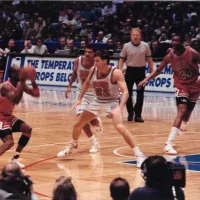
Basketball is a team sport played on a rectangular court...
Ukraine is a large country in Eastern Europe second in...
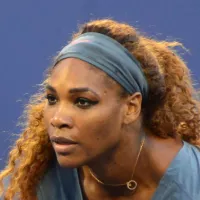
Serena Williams is a highly accomplished American former professional tennis...
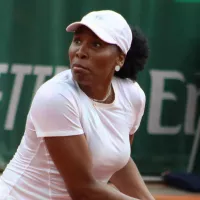
Venus Williams is a highly accomplished American professional tennis player...

Sony is a Japanese multinational conglomerate based in Tokyo Its...
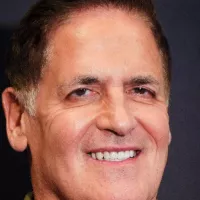
Mark Cuban is an accomplished American businessman television personality and...
Trending
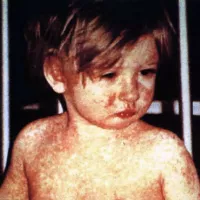
3 months ago Measles Outbreaks Surge in US: Unvaccinated Children Affected, Quarantines Implemented
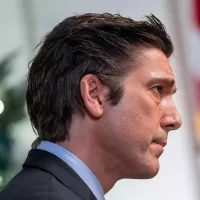
7 months ago David Muir Discusses Life Off Camera as 'World News Tonight' Dominates Ratings.
1 month ago Drake London Suffers PCL Sprain, Out for at Least One Week.

6 months ago California cities increase penalties and fines for illegal fireworks usage and possession.
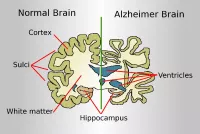
Alzheimer's disease AD is a neurodegenerative disease responsible for - of dementia cases It progressively worsens starting with difficulty remembering...

Danny Ramirez is an American actor recognized for his role as Joaquin Torres Falcon in the Marvel Cinematic Universe MCU...
Popular

Stranger Things created by the Duffer Brothers is a popular...

XXXTentacion born Jahseh Dwayne Ricardo Onfroy was a controversial yet...
The Kennedy Center Honors are annual awards recognizing individuals and...
Turning Point USA TPUSA is an American nonprofit organization founded...

Bernie Sanders is a prominent American politician currently serving as...

Candace Owens is an American conservative political commentator and author...
